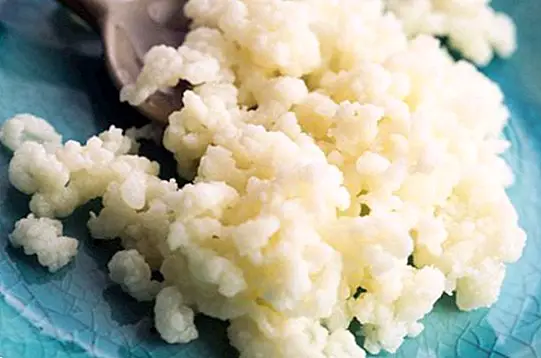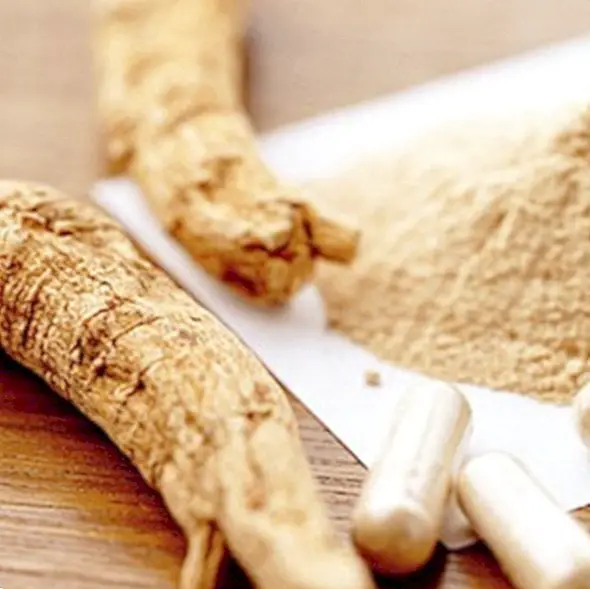Benefits and properties of kefir, unique natural probiotic
Recently we told you that the kefir it is one of the richest foods in probiotics, which consist of live microorganisms that help to increase, maintain and improve our intestinal flora, in which we find essential bacteria that help us maintain good health, given that an imbalance or alteration in our flora tends to have negative consequences for the same
It is, as we will know, a wonderful natural probiotic, which provides excellent benefits for our health, especially when we consume it on a regular basis.

What is kefir?
When asked what is kefir, this is a question of polysaccharide structure in which different microorganisms coexist, in whose nodules or grains we can find in a symbiotic association bacteria as healthy as Lactobacillus desidiosus, Lactobacillus brevis, Lactobacillus acidophilus Y lactic streptococci. We also distinguish yeast, as Sacharomyces delbruckii Y Candida kephir, which are ultimately responsible for generating alcoholic acid and lactic acid fermentation.
It is a white food, or slightly yellowish, with elastic consistency and gelatinous appearance. Generally tends to adopt a mass that is irregular, very characteristic, and stands out as a Fermented milk product extremely rich in probiotics.
Although we must differentiate between milk kefir and the water kefir. Its origin must be found in the Caucasus region; in fact the Muslims knew him as The grains of the Prophet Muhammad, considering it as a manna of Allah. Whatever the case, it is characterized as a very healthy food, recommended within a varied and balanced diet, thanks to its wealth in both benefits and properties.

Most important benefits of kefir
Regenerator of intestinal flora, and excellent digestive
Kefir, being a probiotic food, helps Regulate and regenerate the intestinal flora, so that its consumption is adequate when there is an imbalance of the flora or when, for example, we follow some medical treatment that alters it (such as the consumption of antibiotics). It is a very important quality, since thanks to kefir our organism manages to transform the putrefied intestinal flora into lactic bacilli with antiseptic properties.
It is also a digestive food, useful in case of indigestion and heavy digestion since it favors the correct digestion of the food we consume. On the other hand, some studies have confirmed its usefulness for avoid constipation, reduce the risk of colon cancer Y fight the Escherichia coli.
In the particular case of constipation, kefir acts as a mild laxative, while it is also useful for the regulation of intestinal transit.
Help strengthen the defenses
If you need to increase the defenses there is no doubt that you will find in the kefir a great ally, since by regenerating and restoring our intestinal flora, it also helps at the time of strengthen our immune system.
Good for a healthy cardiovascular system
Different scientific studies have been able to confirm that Regular consumption of kefir helps to take care of our cardiovascular system, and prevent or treat their different disorders.
For example, it has been shown that consuming kefir regularly helps reduce high cholesterol and triglyceride levels, while being able to regulate blood pressure.

Other properties of kefir
- Useful in the natural treatment of anemia.
- It helps the treatment of skin allergies.
- Dissolves the stones of the gall bladder and kidney stones.
- It helps regulate blood glucose levels.
- Rich in antioxidant properties.
- It helps regulate the nervous system, improving concentration and attention.
- Useful in case of insomnia, anxiety, stress and depression.
How many types of kefir are there?
As we mentioned briefly in a previous section, basically and traditionally, we must differentiate between three types or variants of kefir, although in reality there are two best known (milk kefir and water kefir). We must also name the one known as Kombucha. On its basic differences we speak to you next:
- Milk kefir:It is one of the most classic and traditional options. And, as its name suggests, it is a variety of kefir made from contact with milk. That is to say, the fungus from which the kefir is made is fermented when it comes into contact with the milk, producing a somewhat thick drink and acid taste and aroma.
- Water kefir:It is another equally popular variant.It is made from the fermentation of the fungus in water, resulting in an aromatic drink that reminds a lot of citrus (being in turn acidic), and with gas. It has the same qualities as milk kefir, but milk is not necessary for its elaboration, but other ingredients.
- Kombucha : It is another variant of kefir, very popular in some Asian countries, which consists of a drink fermented with microorganismsMedusomyces gisevi, which form a kind of gelatinous colony in its upper part. In addition, it is usually made with tea, and it is usually sweetened to counteract its acid taste.
How was kefir prepared traditionally?
Traditionally, the different kefir nodules they were generated as a consequence of curdling fresh milk in wooden pitchers, whose process was necessary to preserve the different dairy surpluses in view of the evident absence of refrigerators.
After curdling the milk for several days in the same container, these gelatinous granules formed precisely on their walls.
For example, inhabitants of the Caucasus they started to get a drink that tasted really nice, and that had a series of Benefits both important and prominent.
How to make and prepare kefir?
Although in our special article on how to make kefir at home, we already explained the ingredients you need and the steps necessary to make our own kefir, in a detailed and precise way, this time we wanted to pick up some of those basic points.
For making milk kefir, you basically need ¾ of a liter of milk, 150 grams of nodules or kefir grains and a 1 liter glass container. Just put the milk in the glass container at room temperature, add the kefir nodules, cover and let stand about 36 hours. As the kefir nodules will increase in size, you may need to add more milk (unless you want it thick). After this time strain the kefir and add the milk again. Ready!. This article is published for informational purposes only. You can not and should not replace the consultation with a Nutritionist. We advise you to consult your trusted Nutritionist.


